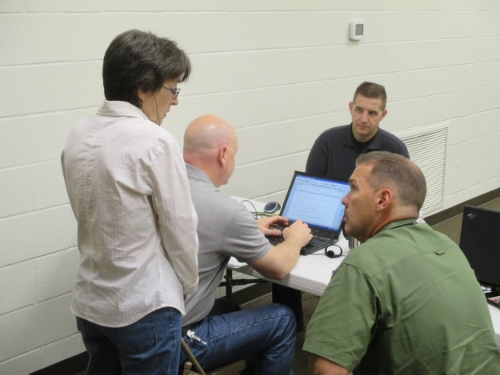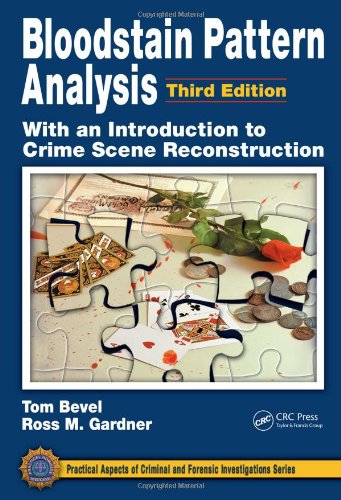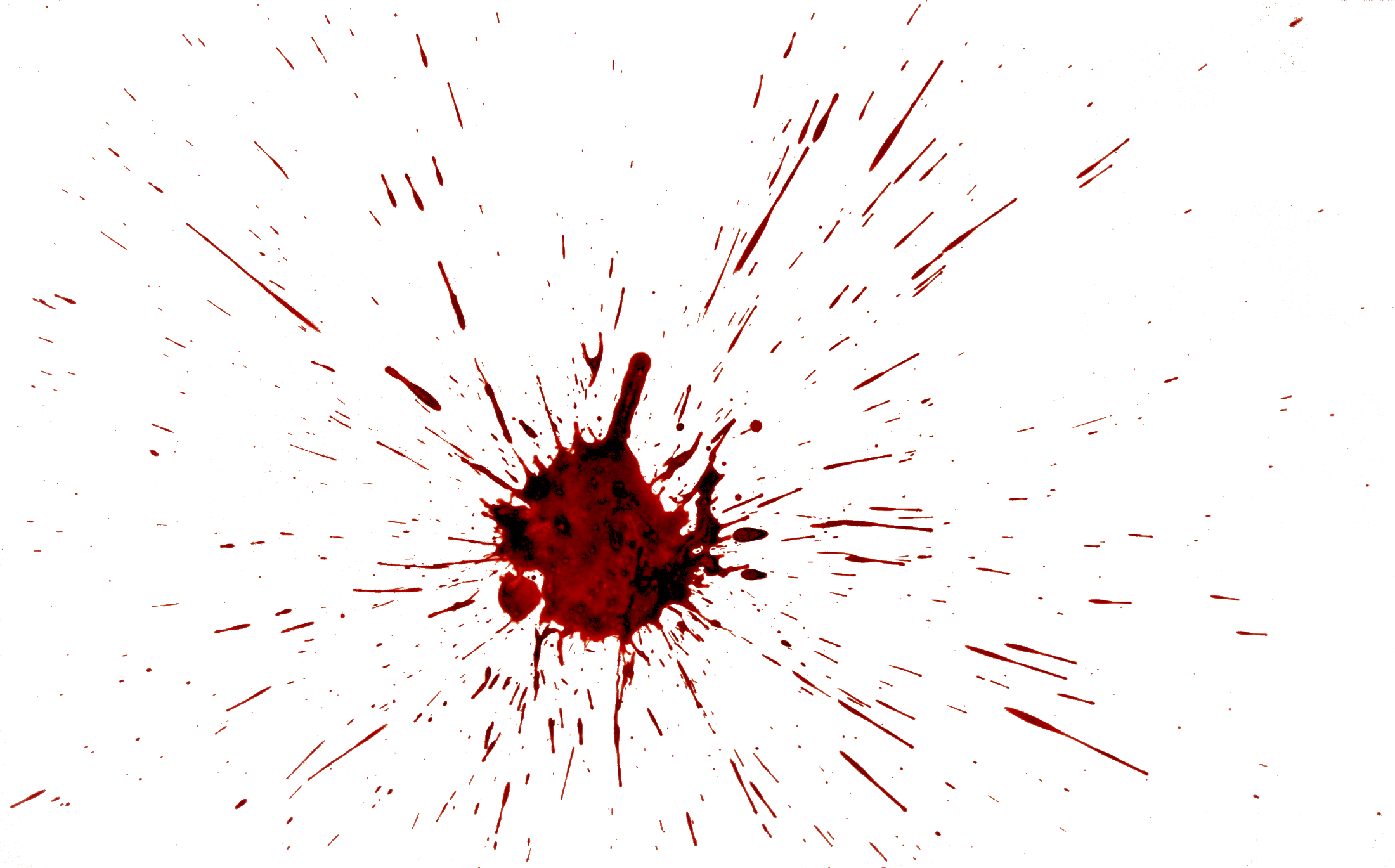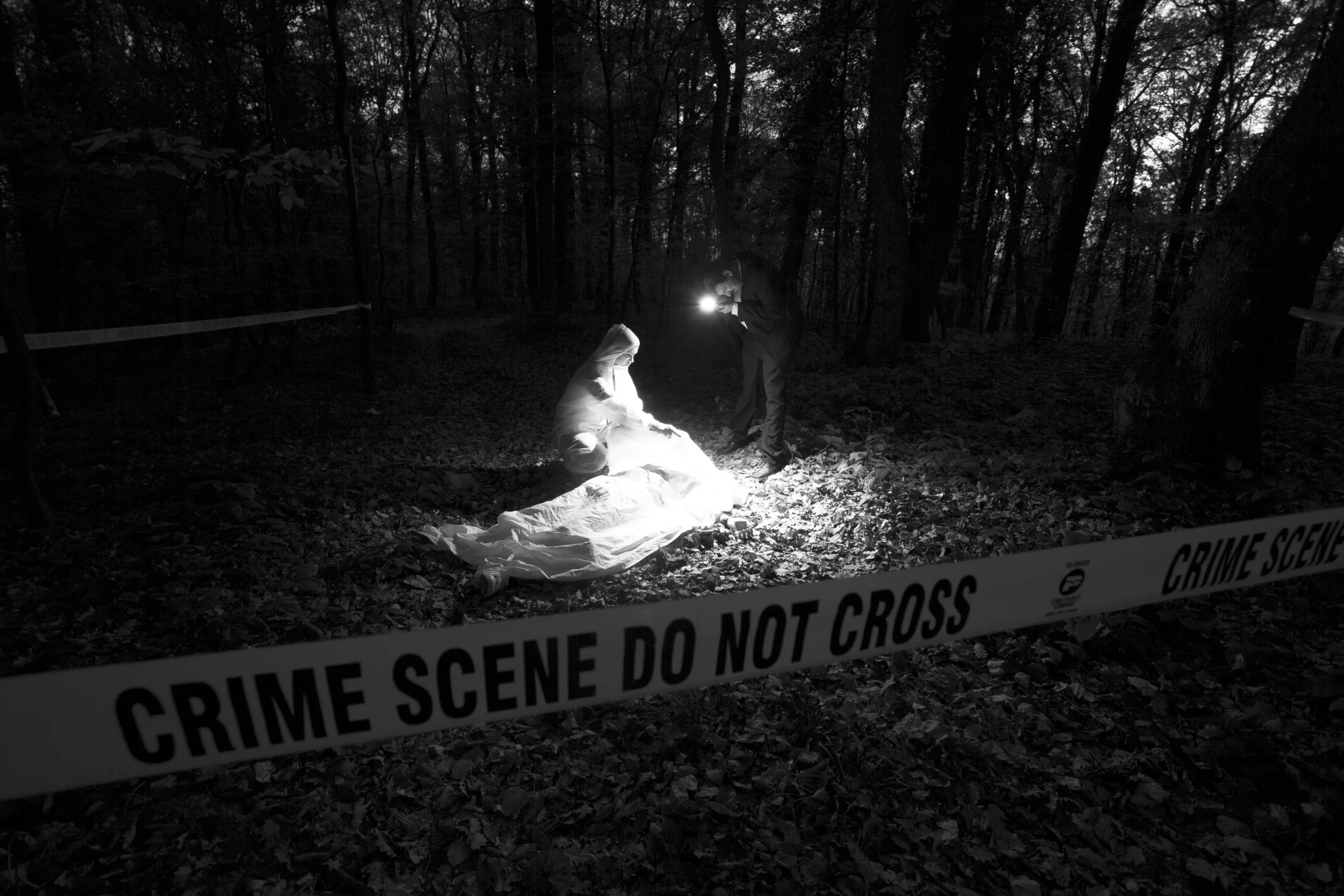A product of the BGA Taxonomic Classification system was the development of the Bloodstain Classification Decision Map, generally referred to as the D/Map. The classification system (the taxonomy) and the D/Map are often confused as being one and the same thing. They are certainly related and intertwined, but they are in fact two distinct things.
The Taxonomy is a fully articulated description of the various patterns. First, it outlines the parent-child relationships of the various stains:
Example: Spatter - linear spatter - cast-off.
It also describes the physical characteristics that must be present for the analysts to objectively classify a pattern as something. For example:
Cast-off taxon include: circular/elliptical stains, oriented in linear or curvi-linear orientations, where the directional angles of co-located stains are parallel and overall in the pattern stains will either become more or less elliptical.
The D/Map is based on the information in the taxonomy and was designed as a tool for the bloodstain pattern analyst. We always give credit to Phillipe Esperanza for initially suggesting the idea of a decision map in bloodstain pattern analysis. From his initial idea, we developed the D/Map along the lines of something known in computer science as an “Expert System”. An expert system identifies the most important questions needed to solve a given problem and leads the user to the most likely answer using the fewest questions possible. The D/Map does not “classify” the pattern, it simply guides the initial classification questions posed by the analyst. It cannot replace, nor was it ever intended to replace the competent and properly trained analyst. Lets consider classification as a process to understand its application.
To analyze anything in comparative science, one must have criteria from known samples to compare the unknown to. The taxonomy identifies these criteria completely for bloodstain patterns. To arrive at the classification however, one must consider a number of issues: Is the pattern is made up of small circular/elliptical shaped stains or is something else present, are these spatter stains in linear or radiating pattern, whether the other stains have regular or irregular margins and a myriad of other characteristics that appear within the various stains. In approaching classification objectively it is necessary to ask these questions in a particular order. Bloodstain patterns are class characteristic type evidence, thus related patterns (families of patterns) share certain broad characteristics. Recognition of these upper level characteristics (e.g., spatter versus non-spatter, linear versus non-linear) directs the analyst to these families, which are then further differentiated by additional criteria. So order in the questions posed is as important as the questions themselves.
The D/Map isolates the most significant comparison criteria beginning first with the broader shared characteristics, then moving to the more discrete criteria. This order will lead the analyst to most likely potential bloodstain classification in the shortest and most effective fashion. Once this potential answer is arrived at, the analyst must then evaluate the pattern against the D/Map’s suggested result. We can make a loose analogy of the D/Map to an AFIS examination. AFIS makes a comparison of certain characteristics and thus isolates potential matches; it doesn't make fingerprint identifications. Once the potential fingerprint matches are isolated, an analyst has to step in and conduct a full comparison. So too with the D/Map; having arrived at a potential classification, that answer must be evaluated by the trained analyst utilizing ALL of the taxon associated to the particular classification as well as considering how those characteristics might manifest themselves in the given context (e.g., variations of substrates).
The D/Map simply isolates the questions posed and their order. As one progresses down the D/Map, the order of the questions eliminates non-candidate patterns. For example:
Is it spatter? Yes
This eliminates all non-spatter type patterns as a source.
Is it linear? Yes
This eliminates the radiating and non-radiating forms of spatter (e.g., impact, mist, expiration and drip) as a source.
Is there volume evident in the pattern? No
This eliminates spurt stains as a source.
Are there parallel direction angles? Yes
This isolates the pattern to the most likely pattern type – cast-off.
Arriving at this potential classification, the analyst considers this answer using their full knowledge of the criteria required by the taxonomy for cast-off.
At any point along the path of questions posed, if the analyst cannot answer a question confidently (many patterns are ambiguous in terms of characteristics), the analyst stops. So considering the previous example, if the analyst was confident that the pattern was linear, but unsure about the presence of volume; the pattern could objectively be the result of any form of linear spatter. This leaves three potential explanations: drip trail, spurt or cast-off. As a BPA analyst, they would then consider all of the various taxon, substrate and context issues to determine if a more refined conclusion was possible. As discussed in a previous blog, this refinement may not be possible. Not all patterns can be isolated to a singular pattern type. But using class characteristic evidence as intended, we have eliminated a large number of patterns that the unknown pattern cannot be and isolated those things the pattern could be.
Proper application of the D/Map requires the following rules:
1. Questions are asked and answered in the order presented by the D/Map. One cannot jump around the questions, as this will functionally invalidate the process.
2. Questions must be answered confidently in a positive or negative form before moving forward to the next question. The analyst must be confident that a characteristic is present or not present before moving forward. The reasoning for this rule lies in Rule #3.
3. When a question cannot be answered confidently, the analyst stops at that point and considers any subsequent children in the taxonomy as potential solutions. The nature of bloodstains prevents analysts from finding all of the various criteria in each and every situation. To presume or subjectively answer a question may in effect, eliminate a potential answer that might well be the true source of the pattern.
The D/Map approach is particularly effective when considering the vast majority of stains the analyst will encounter, those created by the six specific force mechanisms. It works well when the pattern exhibits all of the criteria and when a pattern is more ambiguous. It is helpful when evaluating complex patterns, but these situations are much more difficult to approach. I’ll discuss classifying complex patterns in future blogs.






































